There are 2 ways to get to El Nido. Either you travel by land via Puerto Princesa or straight to El Nido via ITI plane.Since the latter is an expensive option for us and we're composed of a big group we opted to hire a private van instead (good thing the van we contacted allowed 14 of us with our baggage). At first we're a bit hessitant on getting to El Nido since travel time requires us to endure a gruelling 6-8 hours of travel time through rough road according to some articles we've read in the web. Good thing we were told by Kuya Atong our driver that roads going to El Nido has improved through the years as travel time is now reduced to 5-6 hours. Our van departed at around 10:00AM from the airport and stopped at Fort Wally, Roxas for our lunch. The ride was smooth from Puerto Princesa all the way to Roxas since it was all paved.
Fort Wally, Roxas
After our lunch we had our stopover at Fuerza de Santa Isabel in Poblacion, Taytay. The Taytay Fort, the Fuerza de Santa Isabel stone fortress was built in 1667 under the Augustinian Recollect Fathers and named in honor of Spain's Queen Isabela II in the 1800s, It is composed of four bastions - named after the following saints San Toribio, San Miguel, San Juan and
Sta. Isabel. A chapel was also built inside the fortress named Justification for Outstanding Universal Value Satements of authenticity and/or integrity.
Sta. Isabel. A chapel was also built inside the fortress named Justification for Outstanding Universal Value Satements of authenticity and/or integrity.
Facade of the Fuerza de Santa Isabel
Entrance to the Fortress
Chapel erected inside the fortress
Here is the complete history of the stone fortress:
The fort was first built as a wood palisade in 1667 under the Augustinian Recollect Fathers. After 71 years of forced labor (Polo) and material contributionsby the subject Taytayanos, it was completed as s stone fort in December 17,1738 by Tomas Castro, the Spanish military engineer, under the command of Capt. Josef Tierra de Salcedo in 1700, the first batch of exiles or DISTIREROS from Luzon and Visayas were recruited to help in the construction of the fort.
It was constructed to protect the inhabitants from the attacks of the Moro pirates from Sulu who hide from the mask of piracy to fight the spread of Spanish colonization and growth of Christianity. The Spanish occupation was also a threat to the standing trade relationship among the Moros, Chinese, Malaysians and the local inhabitants. From 1730 to 1739, Datu Bigotillo and 3,800 Moro pirates were sent by Maulana-Diafar Sabiesa, the Sultan of Jolo to take over the Fortress of Taytay. The fort was a collosal obstacle in their piratical forrays.
A view from the Fortress
Don Geronimo Sundillon as the first hero of Taytay. During the 21 days siege posted by the Moro pirates in 1739, Sundillon was captured. The pirates asked him to point the secret passage of the fort. But instead,exposed the pirates to the fort sentries, thus curtailing the plan of a surprised attack. Bigotillo thinking he was betrayed by Sundillon commanded his men to torture him. He died as a martyr and saved the local inhabitants and the Spanish people from further aggression.
Another view from the fortress facing the Taytay Hills
During the siege of the Moro pirates, the legend of Sta. Monica, the patron sainrt dress in white garment, her identity unknown, advised them to boil water and fats extracted from the slaughtered cows and carabaos.It was poured down on the scaling pirates causing the walls to be slippery and scalding the marauders as well. It sent the attackers to their surrender. They re-emabarkd and sail back to Jolo, never to bother the Taytayanos.
*words were taken from a brochure in the Fuerza de Sta. Isabel Information Center.
The caretaker of the place were friendly and accomodating that we obliged to do drop cash donations for the preservation of the fortress. After that we embarked again on a grueling ride to our target destination - El Nido.
The caretaker of the place were friendly and accomodating that we obliged to do drop cash donations for the preservation of the fortress. After that we embarked again on a grueling ride to our target destination - El Nido.
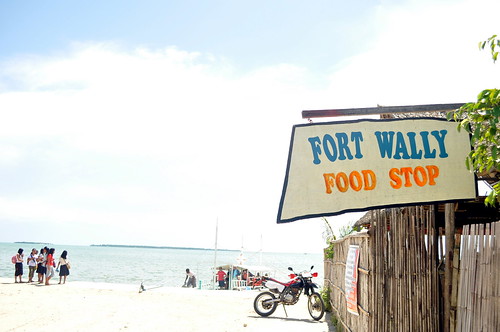
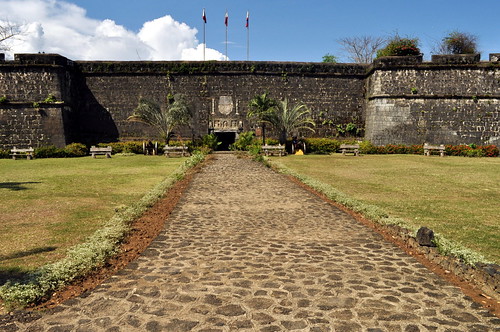

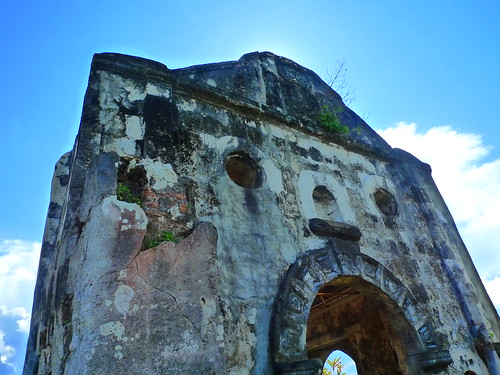
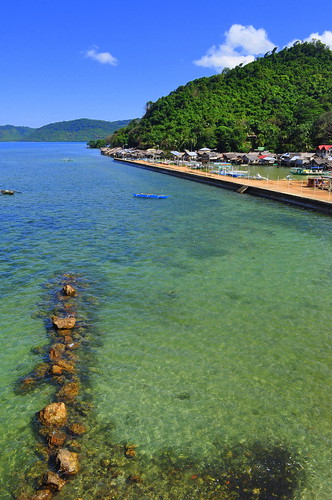
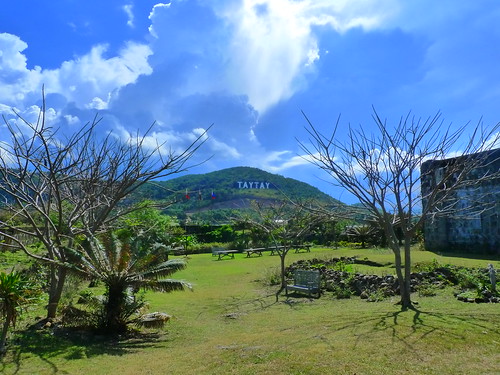






0 comments:
Post a Comment